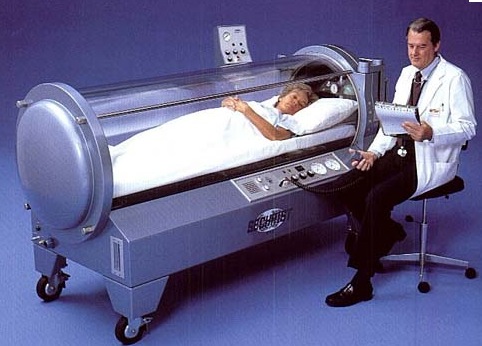
An ongoing question it seems. Does hyperbaric oxygen (HBO) benefit CO poisoning.
The trials so far aren’t clear:
- Trial of normobaric and hyperbaric oxygen for acute carbon monoxide intoxication. Lancet 2:414–419 PMID 2569600
- Hyperbaric or normobaric oxygen for acute carbon monoxide poisoning: a randomised controlled clinical trial. Med J Aust 170:203–210 PMID 10092916
- Hyperbaric oxygen for acute carbon monoxide poisoning. N Engl J Med 347:1057–1067 PMID 12362006
The NEJM Weaver trial is the one that seems to be quoted often in support.
I’ve treated a couple of mild poisonings. One with just symptoms, one with transient LOC. They both got some oxygen and a bed for the night. I’ve never treated a real sickie. There’s actually a chamber in the place I work but like all the fun things the anaesthetists run it not us…
First thing to note – this trial was run from 1989-2000 and only published in 2011. They give no reason for this but it’s weird.
Patients
- over 18 with domestic CO poisoning
- CO poisoning defined by COHb >5% and you’re right that’s not really a valid predictor of anything
- if you had transient LOC at the scene you got randomised to trial A
- if you had “coma” at the scene you went to trial B
- excluded lots of things that would make you sick
And that’s where this trial isn’t as helpful. You’d think the real sickies are the one who’d benefit most but they tend to be in house fires with concurrent cyanide poisoning, burns and seizures. These people were exlcuded in this trial.
Secondly the definition of coma at the scene could be made by paramedic of by family member which is decidedly dubious.
Interventions
- Trial A – NBO (normobaric oxygen) 6 hrs V NBO 4 hrs and 2 hrs HBO (meaning hyperbaric oxygen not a few episodes of the Wire)
- Trial B – NBO 4hrs & 2hrs HBO V 4hrs NBO & two sessions of HBO
Note that these trials aren’t comparing the same thing really. In the “coma” patients there was no group getting NBO alone
Outcomes
- a self-assessment questionnaire and an examination by a doctor (there’s not much detail on this)
Results
- 385 patients in trial A and B combined
- most were quite well; even in the coma group over 75% were fully conscious and about 15% were confused on admission and less than 10% were intubated.
- trial was stopped early as there was significantly worse results in trial B when the patients got two treatments of HBO. (46% good recovery in double HBO group and 68% in single HBO group)
- the two groups in trial A were equal at this point and it was thought they were heading to utility so both trials were ended
- mortality was 0% in trial A and 2% in trial B
Conclusions
this seems a fairly cherry picked group of CO poisonings, in the sense that they’re suitable for HBO therapy. As mentioned above there are lots of good reasons not to put someone in a chamber anyhow.
This trial seems like another good reason not to do it.
UPDATE – since writing this I see EP Monthly has done a feature on the article too.

Pingback: The LITFL Review 025 - Life in the FastLane Medical Blog
Pingback: Carbon monoxide toxicity